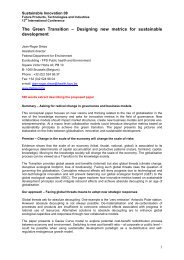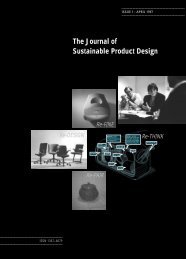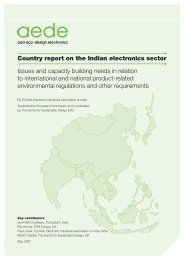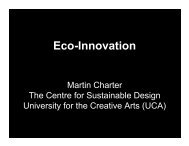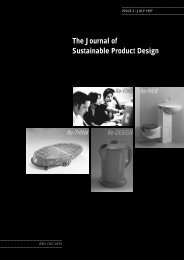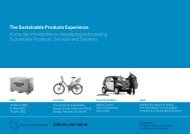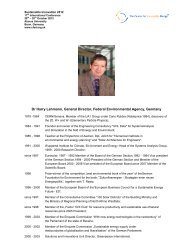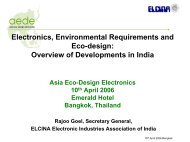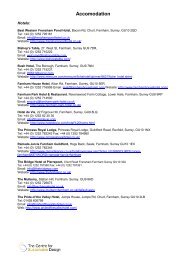acrobat JSPD 8 - The Centre for Sustainable Design
acrobat JSPD 8 - The Centre for Sustainable Design
acrobat JSPD 8 - The Centre for Sustainable Design
Create successful ePaper yourself
Turn your PDF publications into a flip-book with our unique Google optimized e-Paper software.
Figure 2: <strong>The</strong> TAH valve<br />
specific product, the advice is<br />
sorted into the five categories<br />
mentioned above:<br />
· production of material<br />
· manufacturing processes<br />
· transport<br />
· use of product<br />
· ‘end of life’.<br />
For example, if the results of<br />
an LCA imply that the energy<br />
consumption of a product during<br />
use produces a large impact, then<br />
advice will be found under the<br />
category ‘use of product’. Until<br />
now the ‘advice bank’ has only<br />
been issued in printed <strong>for</strong>m.<br />
However, as the amount of<br />
in<strong>for</strong>mation increases, a computerised<br />
database may be developed.<br />
To pick out and find the<br />
most appropriate design strate-<br />
gies is a task that requires both<br />
knowledge, experience and a<br />
creative mind and should be<br />
completed by a DfE expert.<br />
When appropriate guidelines<br />
have been found the result will<br />
be a list of advice on how to<br />
design the specific product with<br />
less environmental impact.<br />
General DfE advice can be found<br />
in many manuals, books and<br />
checklists <strong>for</strong> eco-design (eg.<br />
Brezet 1996, Beherendt 1997 and<br />
Burall 1996). But to be usable the<br />
advice should be as concrete as<br />
possible. <strong>The</strong> designer gains little<br />
help from a piece of advice such<br />
as ‘Do not use toxic materials’. It<br />
is far more important to know<br />
which materials are regarded as<br />
toxic, eg. ‘Avoid the use of lead,<br />
cadmium and mercury’.<br />
ANALYSIS<br />
Develop strategies based on<br />
company-specific guidelines<br />
At this stage, the list of advice is<br />
based only on LCA in<strong>for</strong>mation,<br />
which makes it somewhat<br />
detached. To be used in the ‘day<br />
to day’ work of the designer the<br />
guidelines cannot just be based<br />
upon objective environmental<br />
considerations. Parameters such<br />
as laws, customer demands,<br />
company policies, technical<br />
feasibility and finance have to be<br />
taken into account. Customising<br />
and adapting the strategies<br />
requires a wide knowledge of the<br />
company and the environment.<br />
To enable this to be carried out,<br />
a group of people from different<br />
elements of the company must<br />
cooperate, eg. production,<br />
design, marketing and sales.<br />
JANUARY 1999 · THE JOURNAL OF SUSTAINABLE PRODUCT DESIGN<br />
21



